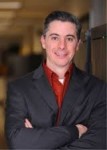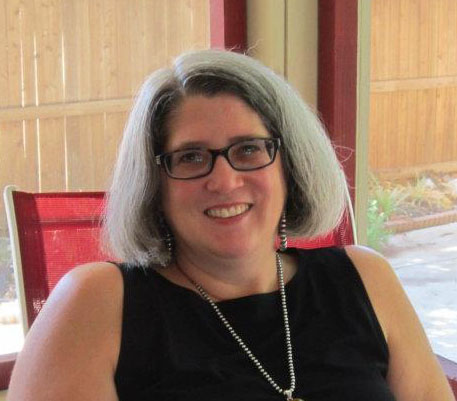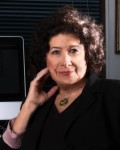The January 2016 Chemical Bulletin 
Next Meeting
Prof. Marco J. Castaldi (CUNY) - Joint Meeting With AIChE: "Combustion, Gasification, and Catalytic Reaction Engineering. Waste to Energy"

Every January, the Chicago Sections of the ACS and AIChE hold a meeting together, reinforcing our relationship based on chemistry.
Dr. Marco J. Castaldi
Associate Professor, Chemical Engineering Department
The City College (CCNY) of City University of New York (CUNY)
ABSTRACT
The research activities led by Castaldi focus on combustion and catalysis of carbon based materials with a focus on energy and environmental considerations. The intellectual thread that is common among the applications is high temperature reaction engineering of homogeneous and heterogeneous carbon based feedstocks. This spans across fossil, renewable and unconventional energy sources and incorporates ideas and applications to improve efficiency and selectivity. This presentation will introduce to the audience the research findings related to methane hydrate stimulation methods for carbon neutral energy production. It will highlight the understanding developed in coal, biomass and waste thermal conversion from pyrolysis to combustion. The transition to the catalysis activities will demonstrate some unique findings on reforming catalysts pertaining to deactivation and insights that explain the performance. Finally results from a one-of-a-kind apparatus that was recently developed to probe catalytic mechanistic cycles will show the true mechanism of methane partial oxidation on Pt based catalysts.
Menu:
Fire Roasted Tomato Soup with Spinach & Sorell
Mesclun Salad with Ranch & Balsamic Dressing
CHOICE OF:
Beef Brochette Served over Rice OR
White fish with Duglare Sauce with Anna’s potato & Broccoli, carrots, cauliflower OR
Penne Pasta with Sautéed Vegetable Grilled Vegetable wrapped in Filo
Apple Crumb Cake for Dessert
Cash Bar
BIOGRAPHY
Dr. Castaldi is the Director of the Waste-to-Energy Research and Technology Council (WTERT) in the United States, an international organization that supports several students and post doctoral researchers; also, his group is recognized by the American Society of Mechanical Engineers as the foremost research group on chemical kinetics of converting wastes to energy. Dr. Castaldi’s research will lead to the development of advanced waste-to-energy processes and in particular the high-efficiency recovery of energy from biomass processes using catalysis. Understanding the fundamental reaction sequences and their associated kinetic parameters is the sure way to provide the requisite capability to explore and develop new technologies while improving existing ones for converting “waste” resources into renewable energy. Currently Dr. Castaldi has established the Earth Engineering Center at City College, City University of New York. The goal of EEC|CCNY is to bring to bear rigorous engineering solutions that enable responsible use of energy and materials for the advancement of society. Through industry collaborations and research sponsorship EEC|CCNY develops novel solutions to some of the world’s most pressing problems. EEC|CCNY routinely engages students with industry professionals enabling a holistic approach to creative realistic, forward-looking applications. The reach of EEC|CCNY is international in scope with many projects connecting international students and companies with a global presence.
Tickets
$35.00 Member
$37.00 Non-member
$20.00 Student/Unemployed/Retired
$15.00 T-shirt: CHICAgO Elements
$10.00 Tote bag: CHICAgO elements - natural canvas
$10.00 Tote bag: CHICAgO elements - blue
$0.00 Sponsorship/Donation (specify amount after Adding to Cart)
$0.00 Donation to Project SEED (specify amount after Adding to Cart)
$0.00 Donation to High School Scholarships (one or more funds, specify amount after Adding to Cart)
$50.00 Sponsor Teacher(s) Membership in AACT
$65.00 Sponsor Teacher(s) Membership in AACT & Affiliate Membership in Chicago ACS
$0.00 Lecture only
Back to top
Letter from the Chair
Dear Chicago ACS Members,
I wish you a happy and prosperous 2016 and send a hearty thank you from the Section to our Past Chair, Inessa Miller, for her excellent leadership in 2015.
As ACS and Chicago Section members, we are part of a great national organization and one of the most active ACS Local Sections in the country. One year ago, Inessa Miller described how her involvement in ACS Chicago brought her countless new networks, passions and opportunities. Being involved in our local Section can help us all build our networks and discover new passions and opportunities. In addition, by networking with each other and with those outside our Section – whether chemists or not – we can enhance our Section's outreach and impact, involve new chemists and fresh ideas, help our membership obtain challenging and satisfying jobs or make valuable contributions after retirement, and just plain enjoy chemistry.
When you come to an ACS Chicago event, please let me or a Board or Committee member know whom you would like to meet and how you’d like to get involved. We want to find better ways to get to know each other at our Section meetings for the betterment of chemistry and chemists in Chicago. There are numerous ways that you can get involved, for example:
- in outreach, by communicating information about chemistry and the value of chemistry to high school students, to the general public and/or to legislators;
- by providing an opportunity for a high school students to gain research experience in your academic, industrial or government research laboratory (Project SEED); or
- by working on programs to encourage and support under-represented minority involvement in the chemical sciences.
The mission of ACS is “to advance the broader chemistry enterprise and its practitioners for the benefit of Earth and its people” and, for nearly 140 years, ACS has been “improving people’s lives through the transforming power of chemistry.” Let’s build our networks in 2016 so that we might all share in improving people’s lives in the Chicago area and in the nation.
MARY JO BOLDINGH, MS, JD
2016 Chair, Chicago ACS
Back to top
ChemShorts for Kids
January, 2016:
Kids, making maple syrup crystals is a fun project! They are an alternate flavorful sweetener in drinks or other treats because maple syrup crystals have a more complex flavor than sugar crystals or rock candy. Here are two methods for making maple syrup crystals. Note you must use pure maple syrup and not one of the popular commercial brands made with high fructose corn syrup and molasses.
Method 1
Have an adult partner heat a cup of pure maple syrup in a pan over medium heat. They need to stir and heat the syrup until it starts to thicken or crystals are seen forming on the bottom or side of the pan. Your adult partner will then pour the syrup onto a chilled plate and allow the syrup to crystallize. If a dark-colored plate is used then it will be easier to watch the crystals form.
Method 2
Cover a baking sheet or shallow dish with a scant 1/4” layer of water. Freeze the dish to make ice. Have an adult partner heat maple syrup as above, and remove the pan from heat. Remove the dish of ice from the freezer. Then your adult partner can drop spoonfuls of the hot syrup onto the ice. The sudden temperature change will cause crystals to form within minutes.
Maple syrup is a mixture of sugars, water, and minerals. In addition there are small amounts of organic acids, amino acids, proteins, phenol compounds and even a few vitamins. The variation in the latter ingredients gives maple syrup the broad spectrum of flavors from different suppliers (this is similar to honey).
At 66°Bx * the sugar is completely in solution and it is a stable solution. When heated, the concentration of sugar increases as water is lost. The sugar remains in solution at the higher temperature even though much of the water boils away. After heating, there is more sugar than can remain in solution at lower temperatures. The solution is said to be super-saturated. Agitation or stirring can cause the sugar to crystallize and come out of solution until the sugar in solution reaches a stable concentration for its temperature. The fact that sugar solidifies into crystals is extremely important in making confections.
Controlling crystallization is quite tricky and depends on temperature and time. You might try both methods above to see if the crystals appear different to your eyes.
* Bx is the abbreviation for Brix, a measure of the sugar concentration by weight in an aqueous solution. So 66 degrees Brix means that 100 grams of solution would contain 66 grams of sugar.
-------------
References:
http://chemistry.about.com/od/sugarcrystalsrockcandy/a/Maple-Syrup-Crystals.htm
Cornell Maple Bulletin 202 (2007) by Stephen Childs
Editor, Dr. Kathleen Carrado Gregar, Argonne National Laboratory
Back to top
Someone You Should Know
ANDREA TWISS-BROOKS
Andrea Twiss-Brooks has been a member of the ACS for over 20 years (including student membership) but she is a recent addition to the Chicago Section board as a director. Andrea is a very active national member and a person who is known to get the job done. She was chair of the Chemical Information Division in 2001 and is currently a councilor of that division. She has been active on the Committee on CAS (Chair 2004-2006), Committee on Community Activities, Committee on Nominations and Elections (Vice-Chair 2014). Andrea is currently on the Council Policy Committee. We are very lucky to have her join the board with her very busy schedule.
Andrea was born in Oneida, New York. She is the eldest of four children, two girls and two boys. She feels being the oldest makes her the bossy sister but there is no supporting evidence of that in her professional life. Andrea was the first to earn a college degree in her family but not the first person to go into science. Her father was a journeyman lineman in the field of powerline construction and her mother worked part time as a home health aide. Later, her mother went back to school and became a licensed practical nurse and an administrator of a small assisted living home.
Ms. Twiss-Brooks has always loved school and learning. At a very early age, she was fascinated with science and her parents encouraged and supported her academic interest. She received her B.S. from Texas Christian University in Fort Worth, Texas. Andrea did undergraduate research in organoboron chemistry under Henry C. (“Jim”) Kelley. She went on to Cornell University and completed her M.S. where she did organometallic chemistry research under Pete Wolczanski. Andrea completed a second M.S. in Library Science from the University of North Texas in Denton, Texas. She combined her passion of chemistry with her love of library science. She confesses that if she ever left academia that she would be a pastry chef. Interestingly enough, Andrea was a blue ribbon champion at the New York State Fair for her strawberry rhubarb pie.
Before starting graduate school at Cornell, Andrea did a summer internship at Rohm and Haas as a laboratory technician. That summer she worked on additives for clay slurry solutions. As she put it, she shook a lot of jars of mud and measured viscosities. After graduate school at Cornell, she worked in Fred McLafferty’s research group directing the data collection phase of the “Wiley/NBS Registry of Mass Spectral Data” (1989 edition). Upon finishing that project, Dr. McLafferty became the Editor of Accounts of Chemical Research and she spent a couple of years managing the editorial office of the journal’s operations. She was in charge of preparing manuscripts for the associate editors, doing word count estimations, nagging reviewers and prompting authors for revisions. Her crowning moment was when she overheard Dr. McLafferty telling a Nobel winning author that she had found an error in his article submission. After completing her library degree, she joined Lamar State University in Beaumont, Texas as an online searcher/science librarian. She used a dial up modem and created graphical chemical structures using text commands to do her chemical searching. In 1993, Andrea took a position at the University of Chicago as a chemical librarian. She is currently the Co-Director, Science Libraries Division, Head of Collection Services. Ms. Twiss-Brooks says that her days consist of lots of meetings, but she still interacts with researchers and students assisting them with their more difficult information questions. When asked what was her favorite position she felt it was a very difficult question to answer but her position as the database update supervisor and editorial office manager at Cornell heavily influenced her decision to go into library and information science. She enjoys working with new and emerging information technologies and seeing how experimental data and information was transformed into the published literature.
Of course, I asked her which scientist would she want to have lunch with, dead or alive. She responded Mary Anning. Andrea has a passion for paleontology and she read the Tracy Chevalier novel “Remarkable Creatures” inspired by Mary Anning. Andrea states that Mary Anning was not a trained scientist and not much is known about her life so Andrea would like to learn more about how she gained her knowledge despite the disadvantages she faced.
Even with a busy professional life, Andrea just celebrated her 33rd wedding anniversary to her husband Frank. They have two children, son Jared and daughter Hanna, who are both interested in science and technology. Jared got his B.S. in computer science and works as a programmer. Hanna recently completed her B.S. in environmental science. Andrea is an avid reader of fiction and belongs to a book group to broaden her horizons. She enjoys cryptic word puzzles, especially those in Harper. She still finds time to be a quilter and the current president of her quilt guild. She has a blog which features some of her work at https://andreasquilting.wordpress.com/my-quilt-gallery/
Andrea’s final word of wisdom to other chemists is “Never lose your sense of wonder and curiosity about the world”.
Fran Kravitz
Back to top
Volunteer Opportunities
Maire S. Curie Girl Scout Chemistry Day Program
The Marie S. Curie Girl Scout Chemistry Day program is going into its sixth year. This day long program is designed to give girls ages 10 to 18 the opportunity to learn about chemistry through lecture and laboratory, the careers available in various areas of chemistry and to talk and interact with female role models who are chemists. One hundred and twenty girls take this program annually.
The history of this program dates back to March of 2010 when an ad-hoc committee was formed with the members of the Primary Education committee in conjunction with members of the Women Chemists Committee. The ad-hoc committee was charged with the duty to develop a pilot Chemistry Badge program for the Girl Scouts of Greater Chicago and Northwest Indiana. The program was modeled after the Chemistry Merit Badge Program developed for the Boy Scouts of America. Research done on the web indicated that there are very few badges in the science and technical fields except for engineering and some science in an environment badge for the Girl Scouts. This program was developed to fill that need in the Girl Scout organization. The original members of this committee were: Amber Azadon, Cherlyn Bradley, Lubna Haque, Bob Hickerson, Josh Kurutz, Fran Kravitz, Margy Levenberg, Peggy Schott and Susan Shih. The committee chose the image of Marie S. Curie because she was both a very recognizable role model in science and she was the first woman chemist to achieve the Nobel Prize in chemistry. Each scout that takes this program receives a booklet which was written by Amber Azadon, Cherlyn Bradley, Ken Fivizzani, Lubna Haque, Fran Kravitz, Margy Levenberg, Peggy Schott and Susan Shih.
We are currently looking for women chemists or women in a related area of science to help as a mentor for this program. Mentors will meet with small groups of girls during lunch and describe their career as a woman chemist, educational requirements needed to be a chemist and opportunities available in chemistry. The program is scheduled from 9 a.m. until 3:30 p.m. A pizza lunch will be provided from noon to 1 p.m. You may volunteer at one, or more than one, location. The locations and dates are:
Saturday, April 2 at North Central College in Naperville, IL
Saturday, April 9 at Valparaiso University in Valparaiso, IN
Saturday, May 7 at College of Lake County in Grayslake, IL
Contact Fran Kravitz by email at [email protected] if you are interested.
FRAN KRAVITZ
Back to top
Articles
A Week in Ontario - #4
In the last article from this exciting trip, I want to share with you some of the biobased companies that we toured. These industries in Ontario have exploded and they are looking to find additional companies to fill significant properties that have been vacated by the petroleum industry.
We started at EcoSynthetix http://ecosynthetix.com/ in Burlington, just outside of Toronto. EcoSynthetix is a green chemicals company started in Michigan. All of their products are derived from sustainable resources trying to displace as much petroleum based materials as possible with polysaccharides from corn, tapioca, or potatoes. Their products are biolatex in paper and board primarily for coatings and biobinders for wood products such as plywood, particle board or oriental strand board (OSB) that do not contain formaldehyde. They are working on integrating their material into the personal care binder industry and building insulation. They have been producing commercially since 2007, supplying over 125 million pounds of product around the globe.
In the Sarnia region, BioAmber http://www.bio-amber.com/ uses sugars to be the world’s largest producer of succinic acid and, after hydrogenation and distillation, produce 1,4-butanediol and THF. All three compounds are primary ingredients for producing bioplastics, textiles, polyurethanes, synthetic leather, food and flavors, paints and coatings, adhesives and many other products. A $10 billion dollar market for them becomes a lot easier as they are making material that fits into existing supply chains. They are currently looking to build a 2nd plant in North America by 2018 which already has its products sold for the next 15 years and a 3rd plants products are already 75% sold out and that is due to be online by 2021. Revenue in 2015 is expected to be $6 million and in 5 years $462 million.
Just south of the Sarnia region, closer to Detroit, lies the Chatham-Kent area where Greenfield – Specialty Alcohols resides http://www.gfsa.com/. Greenfield was founded in 1989 and holds 40% of the Canadian alcohol fuel market and 85% of the Industrial alcohol market with $800 million in sales per year. This company directly competes with Archer Daniels Midland and they even have a warehouse in Bridgeview, IL. Greenfield processes 400 acres of corn per day all within 100 km of Chatham-Kent. Interestingly much of their waste heat is pumped across the road to “Truly Green Farm” http://www.trulygreenfarms.ca/, a giant 45 acre greenhouse for growing tomatoes. This was a truly unique endeavor that showed great promise for waste heat.
PAUL BRANDT
Back to top
Calendar of Events
January 19: The Annual IIT Bridge Competition at IIT’s Main Campus (Herman Hall). You can find information on the Bridge Competition at http://bridgecontest.phys.iit.edu/public/chicago/index
January 20: Chicago Section Joint Meeting with the engineers in AIChE-Chicago.
January 31: Family Open House at the Lederman Science Center from 1-5 pm. Children must be accompanied by an adult. (There's plenty for the grown-ups, too.) Most appropriate for children in grades 3 and up.
March 6-10: Pittcon 2016 will be in Atlanta, GA. http://pittcon.org/
March 13-17: The 251st National ACS Meeting in San Diego. The theme will be “Computers in Chemistry”. See details at http://www.acs.org/content/acs/en/meetings.html
March 31 – April 3: NSTA National Conference in Nashville, http://www.nsta.org/conferences/national.aspx
Back to top
Special Recognition
Congratulations to Zafra Lerman!
The American Physical Society has awarded the 2016 Andrei Sakharov Prize to Zafra Lerman, President of the Malta Conferences Foundation and our distinguished speaker for the Chicago Section’s June 2015 Monthly Meeting. She is being recognized for outstanding leadership and/or achievements of scientists in upholding human rights. The Sakharov Prize is in recognition of Andrei Sakharov, a Russian nuclear physicist who was an advocate of civil liberties and reforms in the Soviet Union, earning him the Nobel Peace Prize in 1975.
The biennial Malta Conference provides a forum using Science As A Bridge To Peace in the Middle East. Scientists throughout the region look to their neighboring countries to learn of research efforts in these countries even though the political boundaries may be greatly pronounced. For more information on the Malta Conferences, please visit: http://www.aps.org/units/fip/newsletters/201402/malta.cfm
The Chicago Section of the ACS has been a strong supporter of the Malta Conferences and invites you to help in their success. http://www.maltaconferencesfoundation.org/donate.html
Back to top







